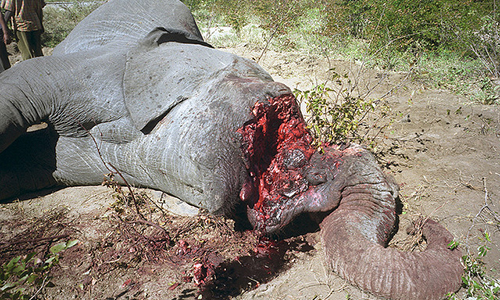1. Origin of Poaching
Poaching did not start is an activity that has been traced back to the Stone Age. Man hunted animals for their products such as the skin that served as clothing attires as well as aesthetic values, their meat and milk for food. Animals were also hunted for their health benefits.
2. Flora Poaching
Plant poaching has been given less newsworthy, less publication but this does not mean that hunting of plants does not exist. Plants such as the Venus flytraps, Ginseng and trees such as redwood are cut down for their medicinal value, wood and curio carvings as well as furniture decorations among other uses.
3. The world most Poached Animal
As much as the words “elephants” and “rhinos” cross our minds when we hear the word “poaching”, the world’s most poached fauna is the Pangolin. This rare species has been a hunt for its expensive meat as well as the scales covering its entire body. It is believed to have medicinal value. This unique animal is the only mammal on earth that is fully covered with scales.
4. Mythological beliefs about Poaching
People in most countries believe that horns, tusks and scales have medicinal values. This belief is not true as scientific studies have proved that these products comprise of keratin, a similar substance found in human hair and fingernails. A different study indicates that 70 percent of people think that horns grow back like fingernails and elephant tusks fall out naturally.
5. Statistics on Poaching
As the 20th century commenced, African elephants and rhinos were in several millions. These were among the animals that became susceptible to poaching. Today, they are considered endangered species and are still being poached. In 2011, over 23 metric tons of illegal ivory was caught around the world. This figure translates to a loss of about 2500 elephants. A study in 2010 by the United Nations suggests that by mid-2020, gorillas could disappear from the Congo basin. There are currently five rhino species and 11 subspecies surviving on earth.
6. Poaching as a Sport
Poaching is like a game, the more one wins, the wiser and motivated they become. Poachers find great pleasure in their ability to hunt animals and plants illegally any time they feel like doing so. The excitement results from the challenge of not getting caught and baffling the game wardens.
7. Economic Value of Poaching
Poachers poach for three main reasons namely sport, monetary gains and subsistence survival. In 2013, the estimated value of trade relating to poaching in Africa stood at 17 billion dollars per annum. Though it is considered an illegal form of trade, poaching is still growing creating businesses and opportunities for jobs across the globe.
8. AK47, the poaching Weapon
The modern firearm known as the AK47 is the most commonly used poaching weapon. Poachers shoot at animals from helicopters as well as from the ground before retrieving their desired products. Other weapons used in poaching include poison, snares, machetes, spears among others.
9. Poaching Villains
There are villains in the society who use poaching profits to advance further poaching. Most poachers are poor and carry out these activities to support their families. They are therefore well trained, funded and networked to commit sophisticated, highly organized crimes. Authorities such as traffic police are pocketed by these villains to allow illegal transportation of the ivory products by avoiding inspection or apprehension.
10. Poaching from Tourism
Tourism is as equally destructive as it is profitable. Tourism has given poachers a new platform to identify and track down potential prey. Some poachers mask themselves as tourist and tour reserves with an aim of surveying how green the pastures are. Photos and videos taken during safaris offer clues such as landmarks and the animals vulnerable to poaching.









Leave a Reply